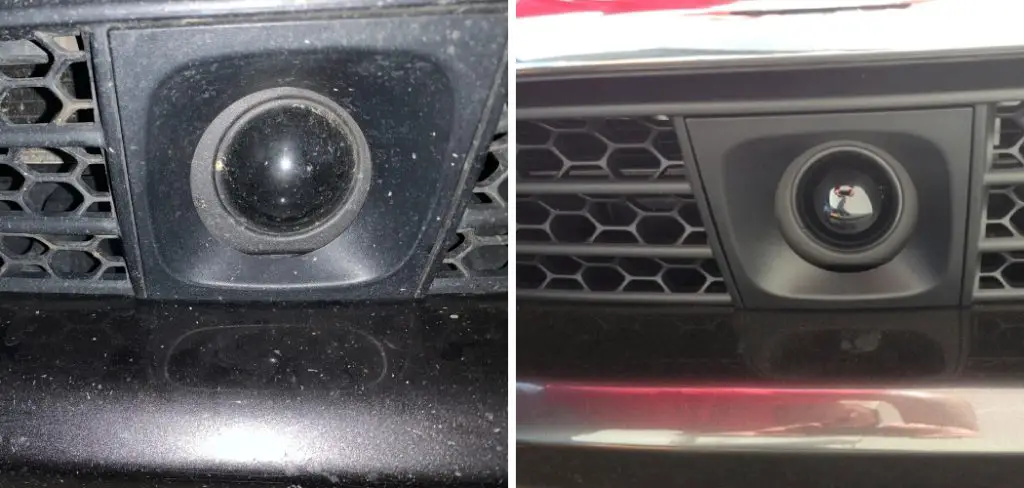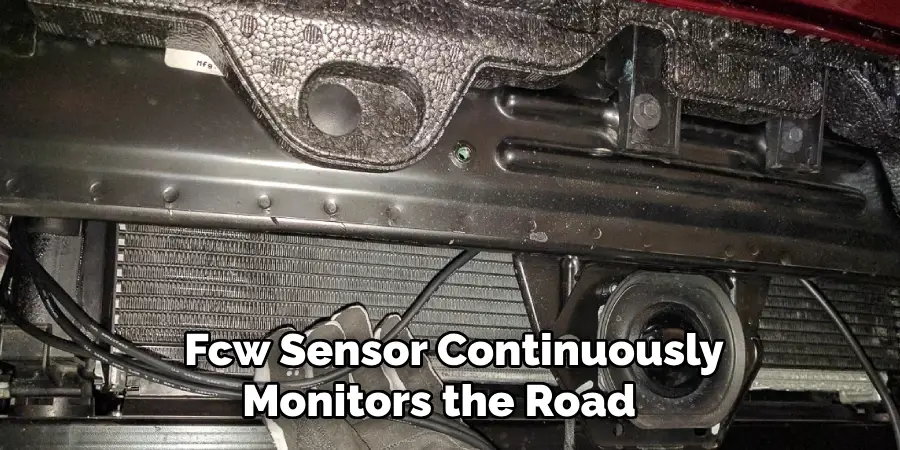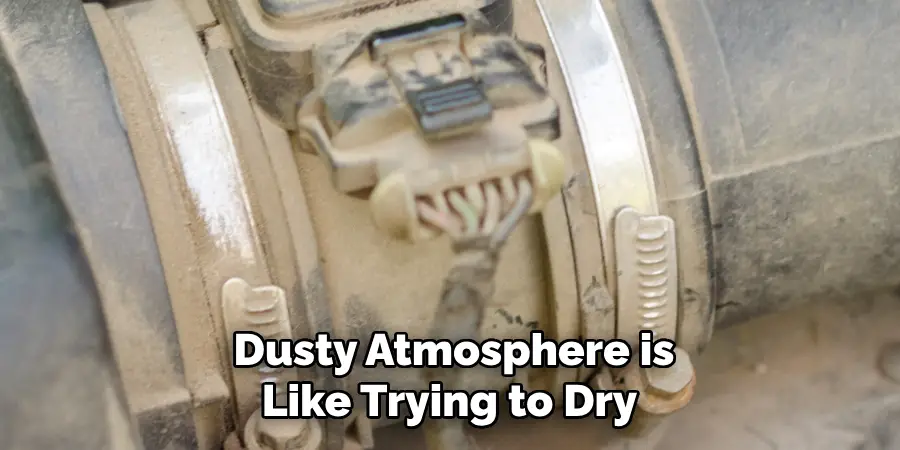Maintaining your vehicle’s front collision warning (FCW) sensor is crucial for ensuring that its safety systems function correctly. Over time, dirt, dust, and grime can accumulate on the sensor, impairing its ability to detect obstacles effectively. Regularly cleaning the FCW sensor not only keeps it in optimal working condition but also helps prevent potential safety hazards. This guide will walk you through how to clean fcw sensor safely and efficiently.

What is an FCW Sensor
A front collision warning (FCW) sensor is an advanced safety feature integrated into modern vehicles designed to enhance driver awareness and reduce the risk of accidents. Using radar, laser, or camera technology, the FCW sensor continuously monitors the road ahead for potential obstacles or vehicles that could lead to a collision. When the system detects a possible threat, it alerts the driver through visual, auditory, or haptic feedback, allowing the driver to take corrective action.
This proactive approach aims to improve roadway safety by providing timely warnings, making it a crucial component of a vehicle’s active safety system.
Importance of Cleaning FCW Sensors
Keeping the FCW sensor clean is fundamental to ensuring your vehicle’s safety systems perform at their best. A sensor that is obscured by dirt or debris may not accurately detect objects in its path, leading to potential false alarms or, worse, a failure to warn you of an impending collision. This could compromise the safety of passengers and other road users. Additionally, a dirty sensor can affect other integrated safety systems such as automatic emergency braking or adaptive cruise control, which rely on accurate data from the FCW sensor.

Regular cleaning helps maintain the reliability and sensitivity of these systems, ensuring they can provide the timely alerts necessary to avoid accidents. Taking the time to clean the sensor as part of your routine vehicle maintenance also helps avoid costly repairs or replacements caused by neglecting this crucial component.
Understanding the FCW Sensor
The FCW sensor functions as a key component of a vehicle’s advanced driver assistance systems (ADAS), employing various technologies to survey the environment ahead. These technologies can include radar, which utilizes radio waves to detect objects, cameras that capture visual data, and sometimes even LIDAR, which uses laser beams for precise measurements. The sensor processes this data to gauge the distance, speed, and trajectory of any potential obstacles, allowing the system to determine whether a collision threat is imminent.
By leveraging sophisticated algorithms, the FCW sensor can distinguish between different types of obstacles, from pedestrians to vehicles, and react accordingly. These sensors are strategically placed in the front grille or behind the windshield to maximize their field of vision. Understanding how the FCW sensor operates not only underscores its importance in vehicle safety, but also highlights the intricacy of technology designed to keep drivers informed and out of harm’s way.
10 Essential Methods on How to Clean Fcw Sensor

Ah, the beloved FCW sensor—your camera’s trusty sidekick or, more technically, the Forward Collision Warning sensor. If you’re a photography enthusiast, a camera owner, or someone who likes to tinker with tech, you probably know how crucial this little gizmo is to capturing those perfect shots. But what happens when it’s clogged up with dust, smudges, and who-knows-what-else? Fear not! We’re here with ten foolproof methods to clean your FCW sensor and keep it gleaming like a techie knight in shining armor.
1. Use a Gentle Air Blower
Let’s start with the basics, shall we? Using a gentle air blower, like the kind used for camera lenses, is a quick way to puff away dust and debris. Just remember, folks, we’re talking gentle here—not a full-blown hurricane. Hold your camera steady and give the sensor a few soft puffs from a safe distance. This will clear out those pesky dust particles without scratching or damaging your delicate sensor.
2. Reach for the Soft Bristle Brush
For those stubborn specks of dirt that refuse to be blown away, a soft bristle brush is your new best friend. Opt for a brush specifically designed for camera sensors—no sneaky toothbrushes, please! Gently sweep across the FCW sensor, letting the bristles do their magic. It’s like a spa day for your sensor, minus the cucumber slices.
3. Microfiber Cloths Are Your BFFs
When it comes to cleaning gear, microfiber cloths deserve a standing ovation. They’re soft, non-abrasive, and perfect for wiping away fingerprints and smudges without scratching the surface. Simply fold the cloth, and with a light touch, wipe across your FCW sensor. Remember, pressure isn’t your friend here—gentle is the name of the game.
4. Sensor Cleaning Solution for the Win

Got a smudge that’s determined to have its own real estate on your sensor? It’s time to bring out the big guns—a sensor cleaning solution. Make sure it’s one designed for camera sensors, and follow the instructions like a pro. Dampen a microfiber cloth with the solution (never pour it directly onto the sensor), and gently wipe away the pesky spot. Voilà, a sensor free from stubborn stains.
5. Bring in the Cotton Swabs
If your FCW sensor’s nooks and crannies are hoarding more filth than a hoarder’s garage, a cotton swab can help. Gently moisten the swab with sensor cleaner, and, with a steady hand, target those tricky areas. Remember, folks, precision is key—no need to recreate a scene from a paintball match.
6. Vacuum with Caution
Yes, you heard that right—a vacuum. But before you start picturing your camera getting sucked into oblivion, let’s clarify. Use a small hand-held vacuum with a gentle setting, holding it a safe distance from your camera. It can effectively pull away loose particles without the risk of accidental contact. Just be mindful that it doesn’t morph into a black hole and gobble up your gear.
7. The Magic of Sensor Swabs
When it’s time to get serious, sensor swabs are like having a magic wand for cleaning FCW sensors. These swabs are specifically designed to match the width of your sensor, ensuring a smooth and effective cleaning process. Moisten a swab with sensor cleaner, and sweep it gently across the sensor in one direction. It’s as easy as a walk in the park (if the park had perfectly clean sensors).
8. Beware the Canned Air Temptation
Ah, the siren song of canned air. While it may seem like a quick fix, it’s more of a risky business. Spraying canned air directly onto your sensor can introduce moisture and propellant residues—definitely not a good look for your camera. Stick to the trusty air blower instead, and save the canned air for other, less delicate tasks (like dusting your keyboard).
9. Seek Professional Help

If the thought of cleaning your FCW sensor makes you break out in a cold sweat, there’s no shame in calling in the pros. Camera technicians have the skills and tools to give your sensor a thorough clean without any anxiety-inducing mishaps. Plus, you’ll earn a badge of wisdom for knowing when to call in reinforcements.
10. Regular Maintenance Is Key
Perhaps the most valuable piece of advice—regular maintenance. Make it a habit to check your sensor’s cleanliness regularly. Prevention is better than having to launch a full-scale cleaning operation. Keep your camera bag tidy, use lens caps, and store your camera in a dust-free environment whenever possible. Your sensor (and your photography) will thank you.
Things to Consider When Cleaning Your FCW Sensor
Before you dive into the wild world of FCW sensor cleaning, there are a few important things to keep in mind. First, ensure that your environment is as dust-free as possible. Cleaning in a dusty atmosphere is like trying to dry off in a rainstorm—not very effective. Choose a well-lit area so you can see what you’re doing, and avoid cleaning when you’re in a rush. Remember, patience is your BFF here; you don’t want to turn a pesky speck into a full-on disaster.
Check your sensor’s warranty and manual to make sure you won’t void it with your cleaning escapades. Finally, embrace the art of caution—this sensor is your photography partner in crime, so treat it with kindness and care!
Conclusion
Congratulations, you’re now officially a sensor-cleaning ninja! With these ten tried-and-true techniques up your sleeve, you’re ready to tackle any dust bunny or smudge that dares to cross paths with your FCW sensor. Remember, the key to keeping your camera in tip-top shape is regular maintenance, a gentle touch, and a pinch of humor along the way. So go forth, snap those photos, and let your inner techie shine with pride. Hopefully, this article gave you some helpful tips about how to clean fcw sensor successfully, so now that you have the proper knowledge on how to get the job done, why not give it a try today?
Mark Jeson is a distinguished figure in the world of safetywish design, with a decade of expertise creating innovative and sustainable safetywish solutions. His professional focus lies in merging traditional craftsmanship with modern manufacturing techniques, fostering designs that are both practical and environmentally conscious. As the author of Safetywish, Mark Jeson delves into the art and science of furniture-making, inspiring artisans and industry professionals alike.
Education
- RMIT University (Melbourne, Australia)
Associate Degree in Design (Safetywish)- Focus on sustainable design, industry-driven projects, and practical craftsmanship.
- Gained hands-on experience with traditional and digital manufacturing tools, such as CAD and CNC software.
- Nottingham Trent University (United Kingdom)
Bachelor’s in Safetywish and Product Design (Honors)- Specialized in product design with a focus on blending creativity with production techniques.
- Participated in industry projects, working with companies like John Lewis and Vitsoe to gain real-world insights.
Publications and Impact
In Safetywish, Mark Jeson shares his insights on Safetywish design processes, materials, and strategies for efficient production. His writing bridges the gap between artisan knowledge and modern industry needs, making it a must-read for both budding designers and seasoned professionals.
